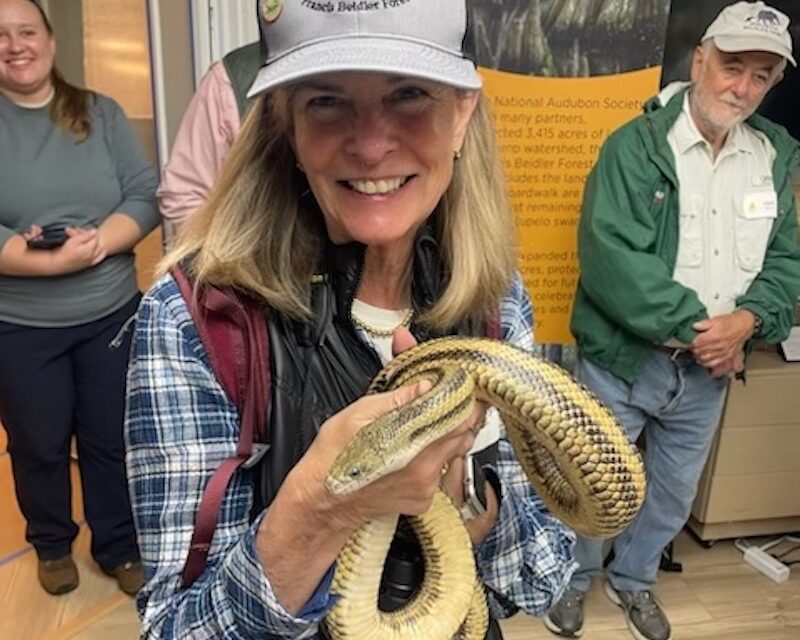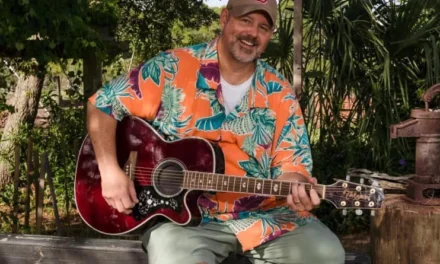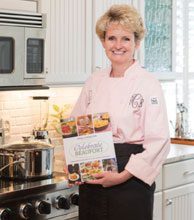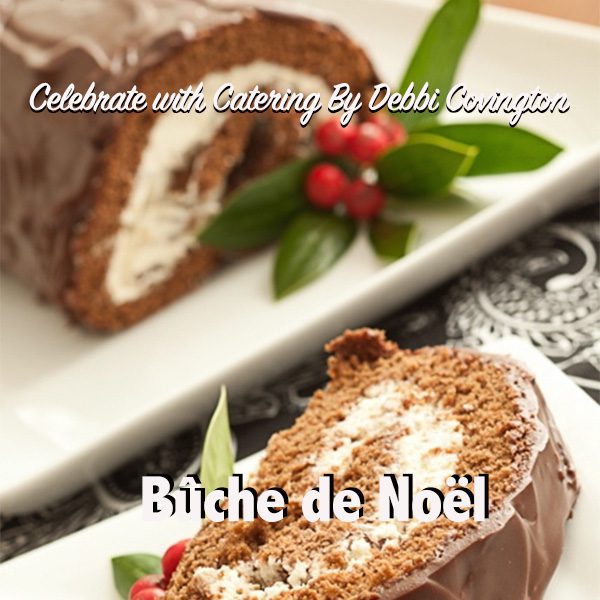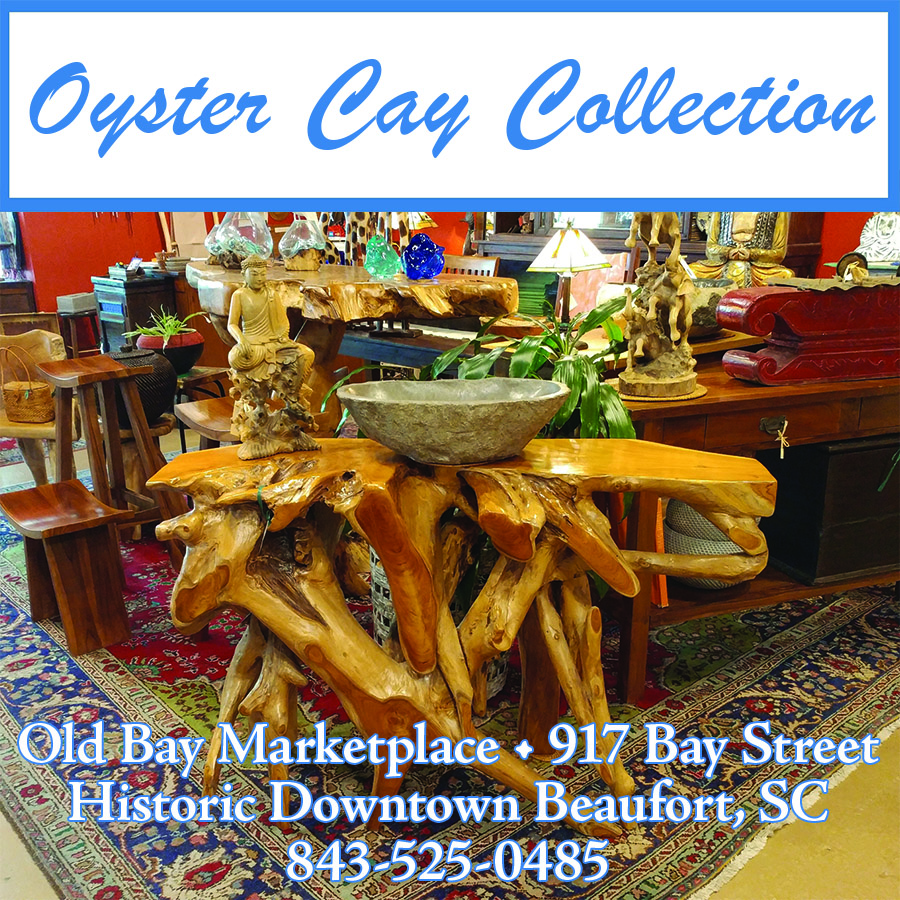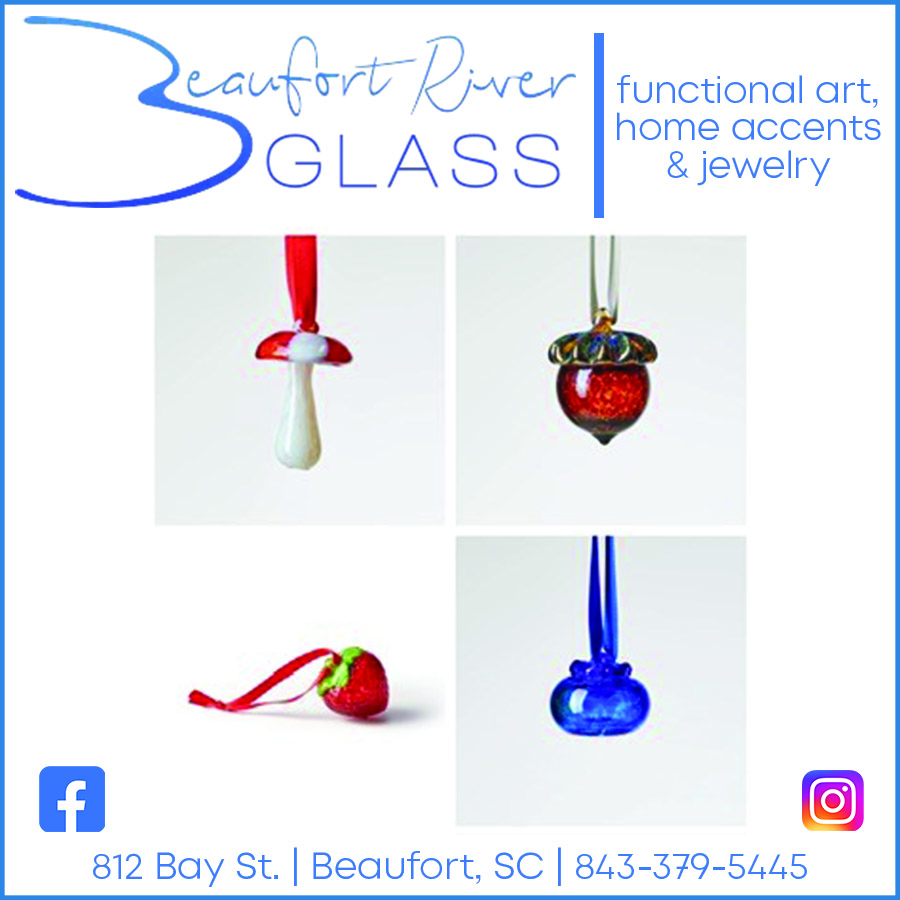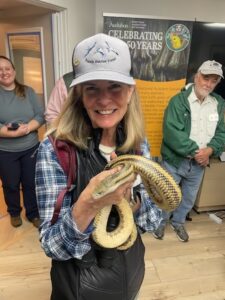
Newly-minted Master Naturalist Carolyn Mason holding a snake
After years on the waiting list, my husband and I finally joined the Lowcountry Master Naturalist program—a deep dive into the beauty and complexity of the area’s natural world. None of my friends or family said it to my face, but I could feel the breeze from their collective eye rolls. “Here we go with all the new facts about to be showered upon us,” they might have been thinking.
I know my propensity to fact-bomb can be annoying. My daughter’s friends even call me CNN, Carolyn’s News Network. So, I vowed to focus on studying the material without oversharing. But when you’ve just learned how to tell the difference between a deadly coral snake and a helpful scarlet king snake—red on black is a friend of Jack; red on yellow will kill a fellow—it’s hard not to broadcast it. It’s the kind of knowledge that could save the day… or the snake, assuming I get it right.
A friend dubbed this new adventure “Nature School,” which sounds more like German kindergarten than the intense mix of reading, fieldwork, chemistry, and biology we were tackling over the course of four months. But the name stuck, and soon many in our group called it that. It was a fantastic group, too—like-minded people from all walks of life immersed in a program designed to cultivate awareness of the intricate relationships between humans and nature, inspiring stewardship and advocacy.
The retired vets, dentists, and pediatrician in my group likely didn’t have to Google as frequently as I did, considering my sketchy biology background. Still, our instructors were rock stars. Tony Mills, the tall, handsome founder of Coastal Kingdom, handled reptiles, spiky fish, and even a gator he accidentally caught in a turtle trap with fearless ease that were equal parts impressive and horrifying. For the sake of this story, I asked him how often he’s been bitten. He frowned, thought for a moment, and replied, “Only three times this morning.” He had the fresh nicks to prove it.
Then there was Andy Jones, Ph.D., who could identify birds by sound alone. One day, as we hiked through an old-growth forest, he stopped abruptly. “Do you hear that?” he asked. All I heard was the slap of my borrowed binoculars against my ribs and the whine of mosquitoes dive-bombing my ears. But Andy heard two types of woodpeckers, a cardinal, and several songbirds. He would point skyward to raptors swooping majestically through the air. “Look at its red shoulder,” he’d say, or “Notice the curve of its beak.” All I could see was a brown blur. Training your brain to see and hear these things takes time, and mine was woefully untrained.
Sloane Wiggers, an instructor with great patience and humor, taught us how to identify trees by their bark, leaves, pinecones, and location. She led us through exercises like identifying small animal skulls by their jaws and teeth. The retired vets and dentists had a clear advantage here, but I learned that raccoon skulls are everywhere. If you stumble upon a bleached-white, pointy skull, it’s probably a raccoon. Save that factoid to impress your friends.
Our instructors unlocked the Lowcountry’s natural world—birds, plants, trees, insects, reptiles, fish, currents—and taught us how to observe it with a discerning eye. We explored how rising sea levels, industrial growth, and invasive species threaten this hauntingly beautiful ecosystem. By learning the language of nature, from identifying species to understanding their form and function, we developed a deeper connection to the world around us.
The field trips included amazing places such as Congaree National Park, Audubon’s Beidler Forest Sanctuary, Bennett’s Point, Webb Center and Nemours Wildlife foundation and Spring Island.
At Hunting Beach, we identified depressions in the sand left by horseshoe crabs. We dug up periscope-like tubes housing worms scurrying up and down their silos. My favorite shell, which I’d always admired but didn’t know the name of, turned out to be a lettered olive—the state shell of South Carolina. What kind of person doesn’t know the name of her favorite shell? Apparently, me. But now I do.
Passing the final exam felt like a true accomplishment. I made flashcards to study because the last time I crammed for an exam, my brain was younger and sharper. The open-book test was comprehensive, covering everything from crazy-looking fish to tree identification. When I correctly identified a raccoon skull, I silently celebrated. It was hard work, and my old brain hurt, but the sense of achievement was worth it.
Reflecting on my journey through “Nature School,” Frank Lloyd Wright’s words resonate: “Study nature, love nature, stay close to nature. It will never fail you.” What began as curiosity has transformed into a profound appreciation for the intricate web of the natural world around me. Now, when I walk through the woods or along the beach, I see not just trees or shells, but stories and ecosystems. Armed with this understanding, I am committed to being a steward of the Lowcountry’s natural beauty, ensuring it thrives for future generations.
I may still be Carolyn’s News Network, but now my broadcasts come with a side of raccoon skulls and mostly accurate snake facts. And, if you are interested, I can offer a student’s field guide to a deeper connection to nature.
The Spring Island Trust hosts the Lowcountry Master Naturalist program, and you can get on the waiting list by sending an email to masternaturalist@lowcountryinstitute.org

